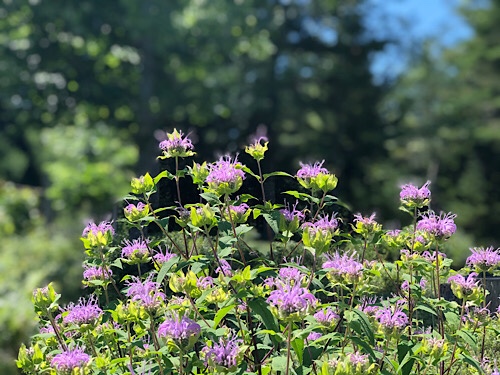
Monarda

our maine home – zone 5b

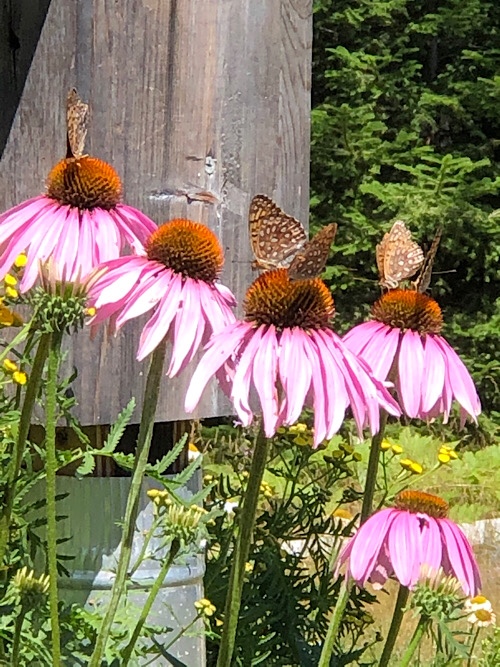
It’s quite a production. And I’m doing it mostly myself. No fava bean party this year. But the deliciousness makes it all worthwhile.
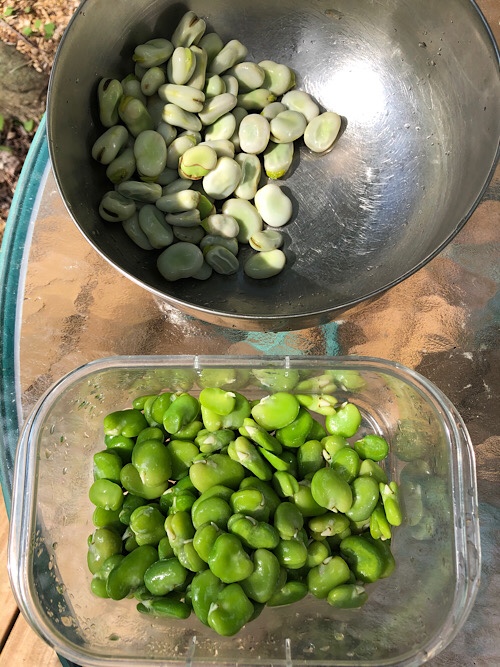

I made pesto with half and froze half. The same amount is still in the garden, so I will do this operation over again in a few days.
Pesto ingredients:
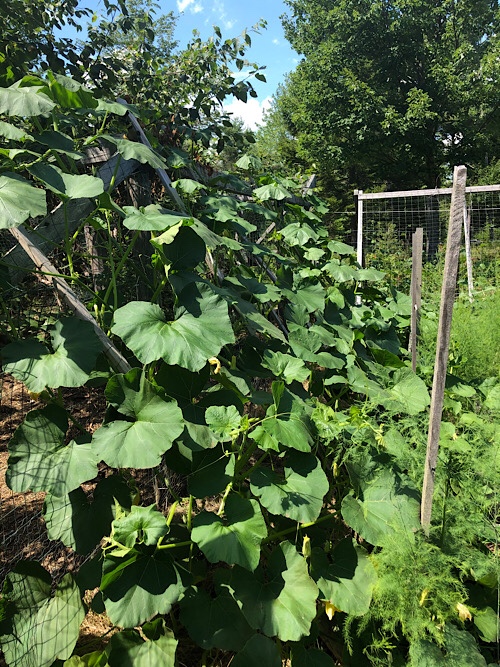
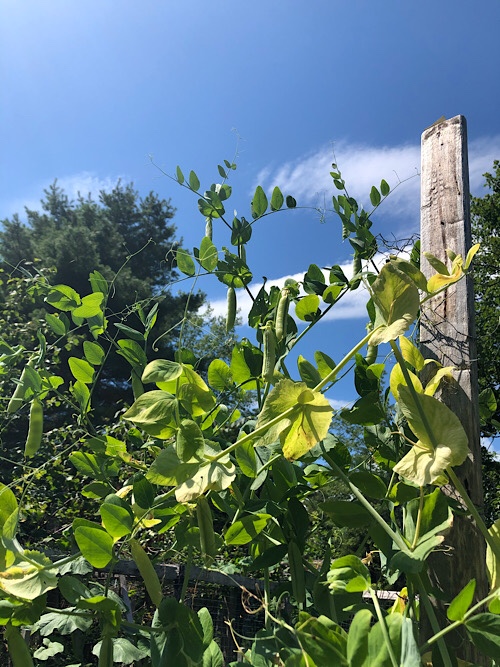
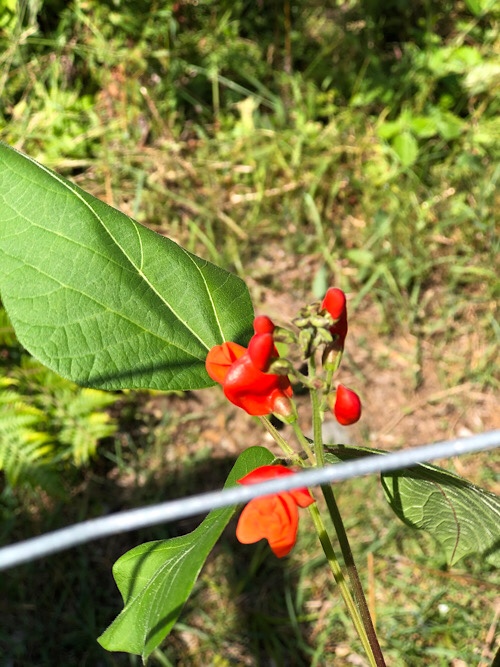

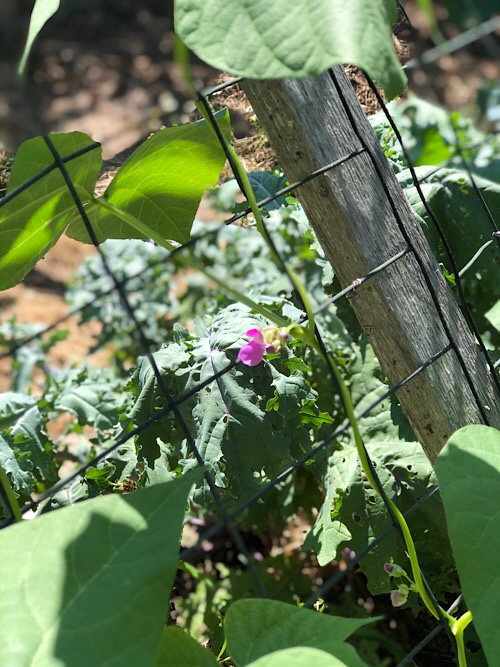
We are harvesting:
It all takes some work. The garlic needs to be cured, the fingerlings dug and soil sifted, the fava beans shelled, blanched, released from their waxy coat, and frozen. The peas shelled.
I pick over the blueberries to clean them a bit then freeze them in a single layer on a tray. When frozen, we transfer them to a freezer bag. We pick blueberries every morning. This morning, hit a record of forty ounces.
Making room in the garden for a fall planting, which should be done – now!
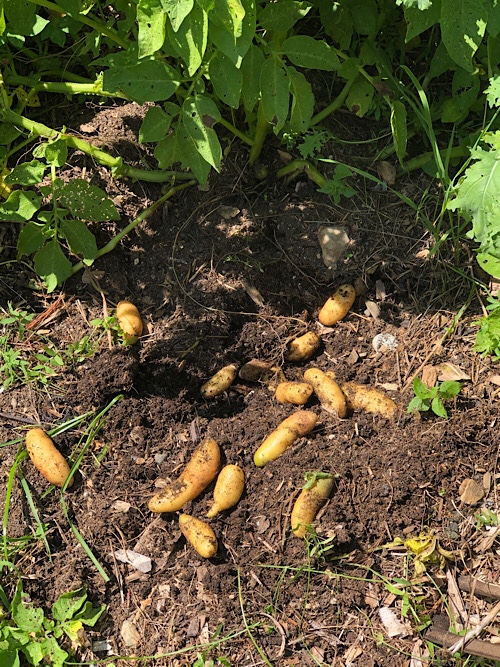
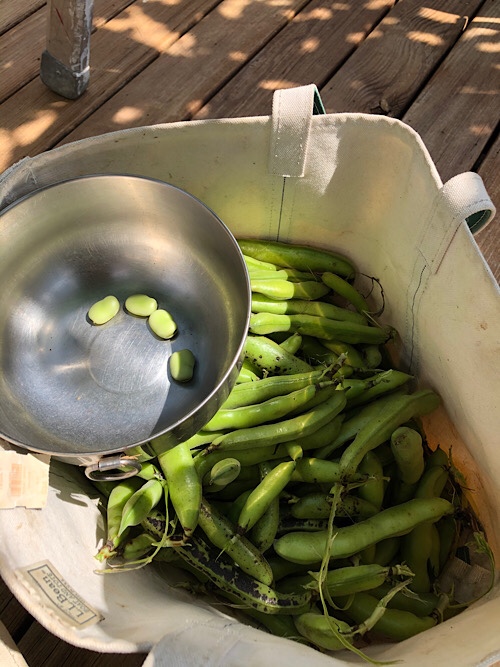
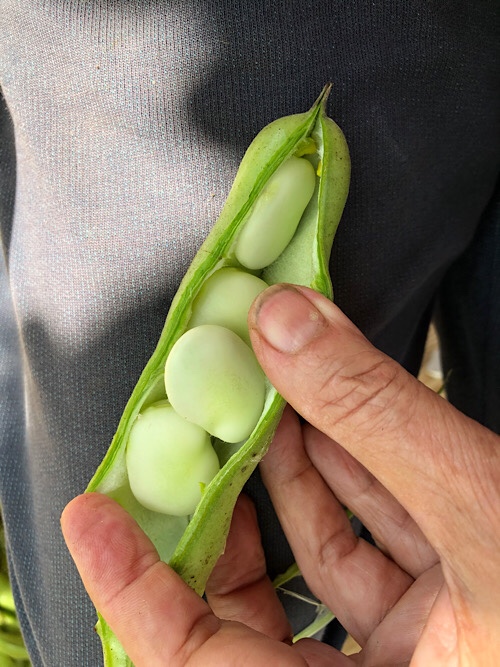
I harvested a cabbage on July 20. Pretty early! This is from a seedling bought from Chuck, variety “Farao.”
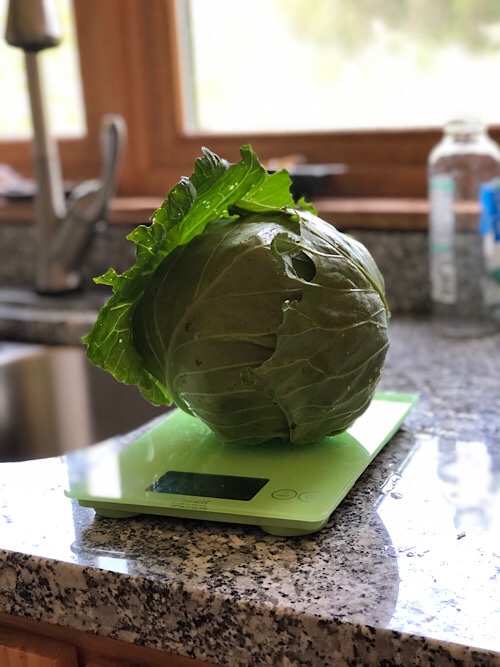
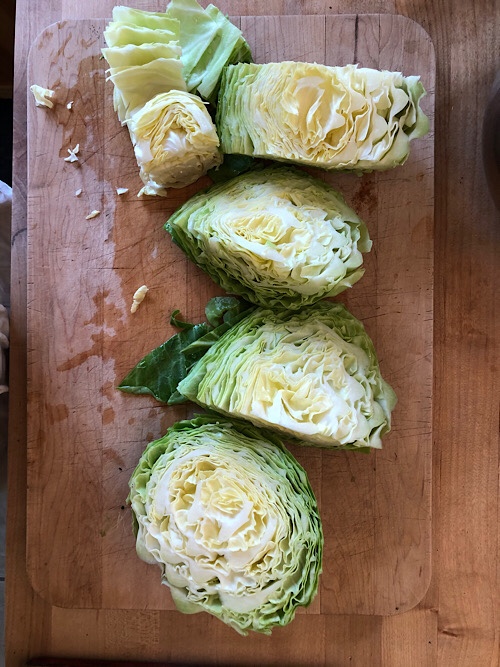
We shred cabbage in the food processor using the 2mm blade. Then weigh in grams, calculating salt as 2 percent of that weight.
Massage in salt, let sit, then load into crock for fermenting. This cabbage will make one quart jar of kraut.
The garden is full of delights. And as always, mysteries.
This morning, a heavy dew or maybe a descended fog spangled everything. It burned off as the sun got hot.
I took some photos. I tried to photograph dew but it never comes out as beautiful as it is,
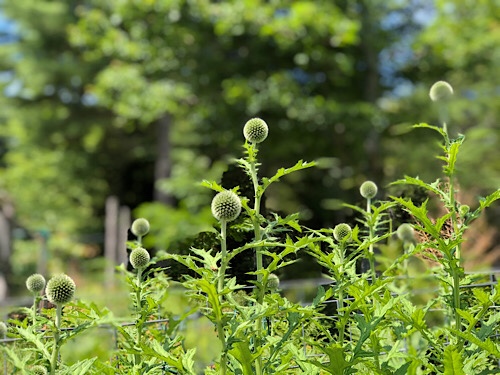
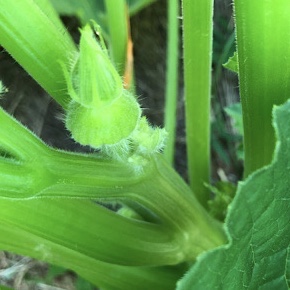
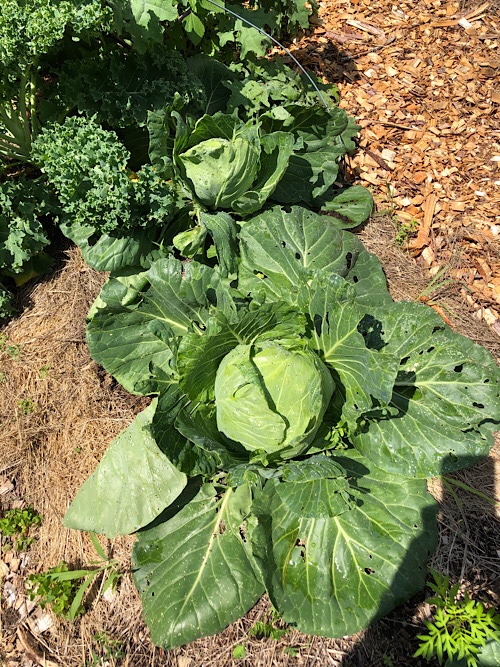
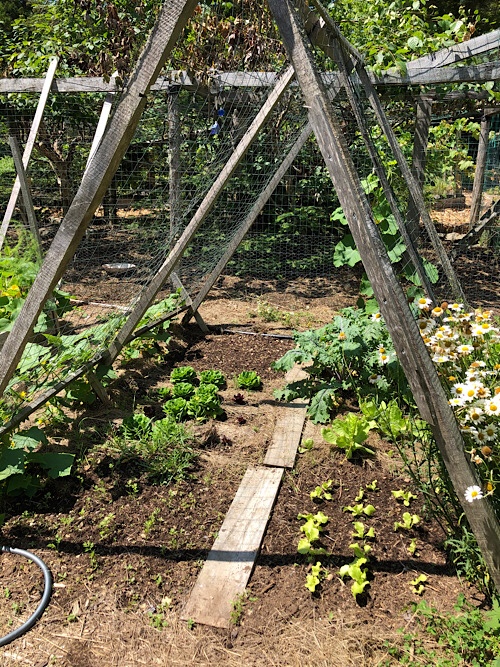
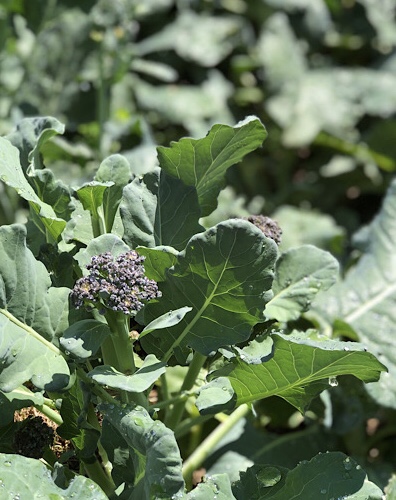
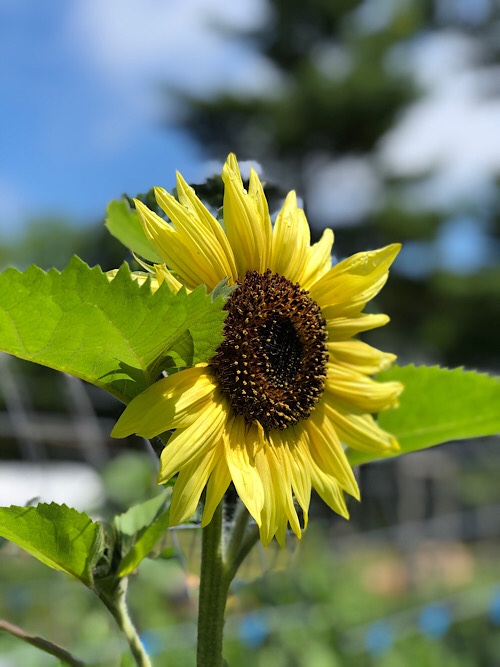
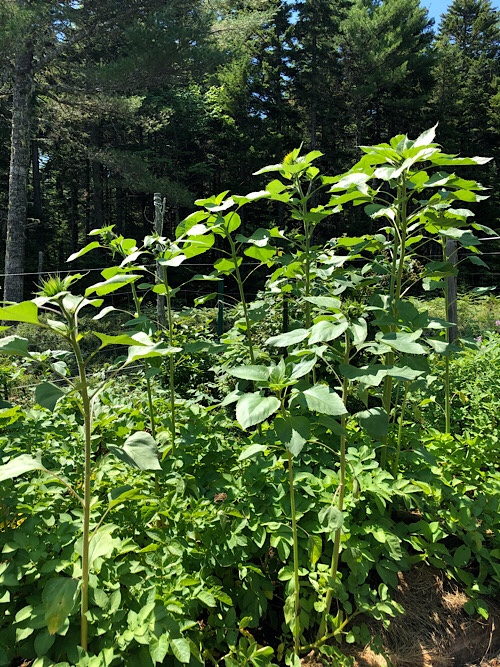
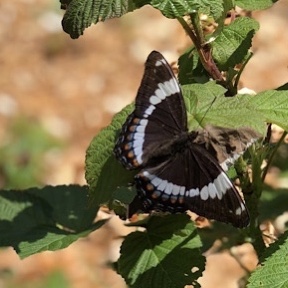
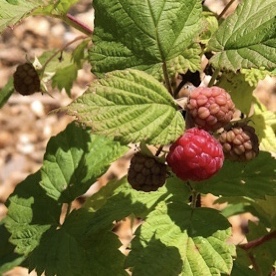
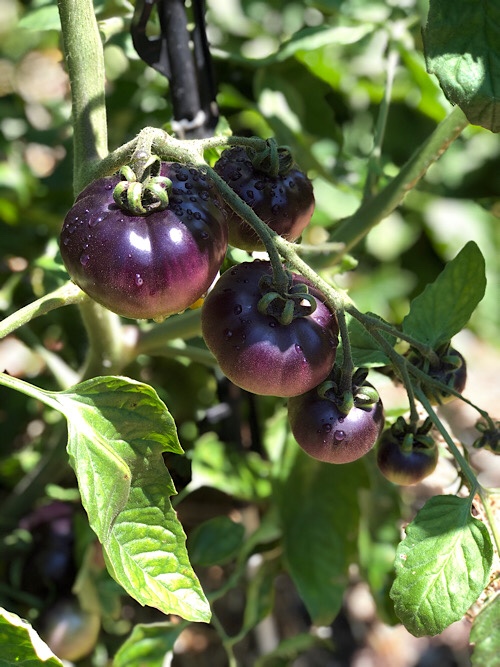
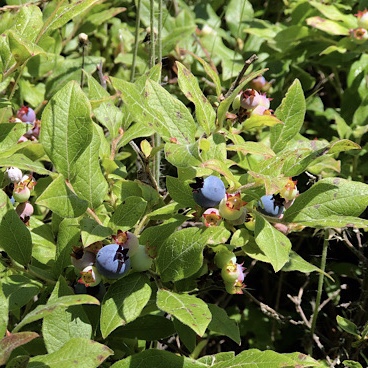
I love my field of pink poppies that grows larger every year.

We have a few hardy kiwi vines growing up over the deck on an arbor.
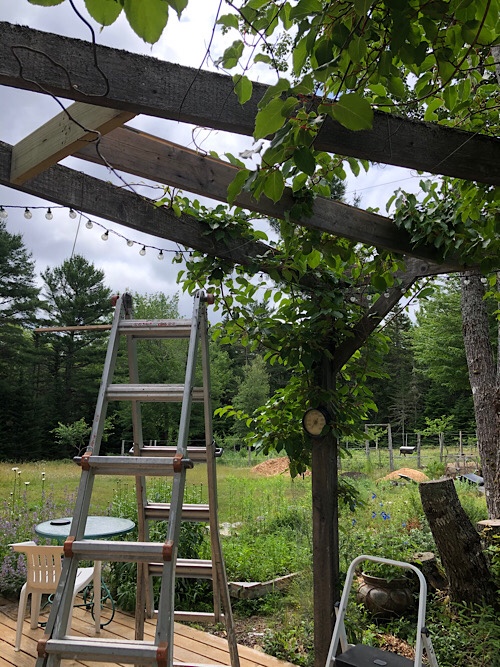
Two years ago a porcupine got up there in the spring and pruned the vines severely. We wrapped chicken wire around the posts and it put a stop to that.
This year Sam is training the increasingly lush vines to cover bare spots. He added some bracing in the arbor to reduce the size of the gaps.
We have never had kiwi fruits, but we have lots of blossoms. Maybe we are lacking a male plant.

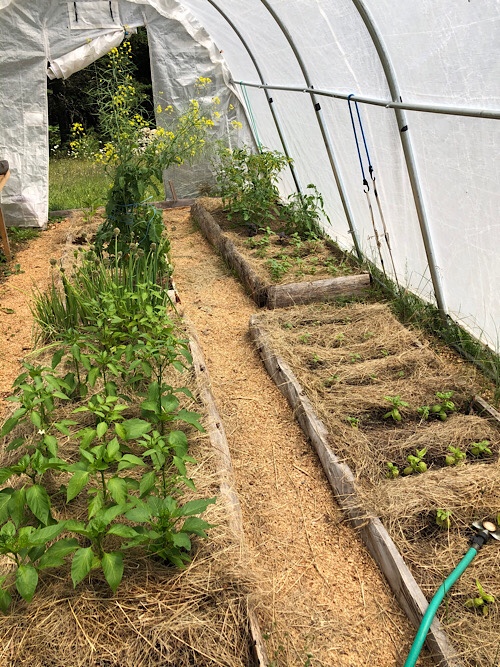
I like to photograph and describe the garden once a month to be able to look back on progress. Time passes and I meant to do this the end of June, but we have slipped a few days.
The hoophouse is now a full fledged hothouse. It requires deep watering at least once a week. The peppers are big and have blossoms. There are a few baby eggplants, but the eggplants (not visible in photo) look a bit feeble. The basil is starting to grow and losing that struggling look with browning leaves. The okra has gained two or three secondary leaves. The tomatillos have a lot of flowers and tiny fruits. I read you need to rustle them so they pollinate each others, so I’m doing that. The ground cherries have pulled themselves together after some transplant shock and are starting to grow well. Not too many pest problems, although the ruby basil leaves have some holes. But they are so beautiful.
I pulled most of the kale but am leaving a few plants for interest and for seeds. Will also get some seeds from the green onions.
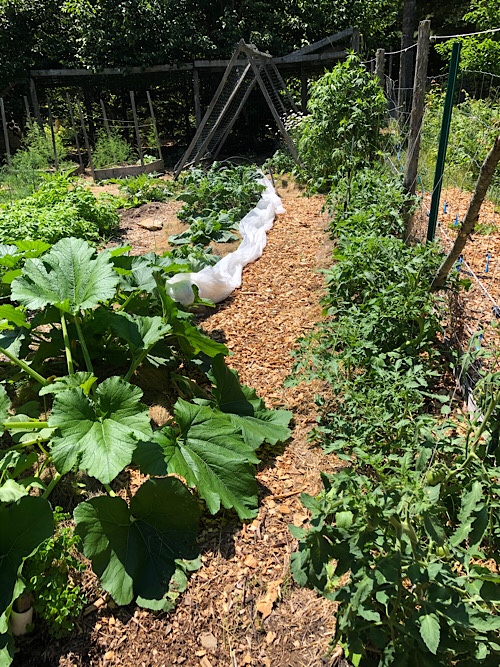
First row in the garden is dominated by two huge zucchini plants that took off like jackrabbits. We’ve been eating some baby zukes. The tomatoes look good and are on strings now. The cabbage is subject to worms. I don’t know what to do with it. There are some worms on the kale too. The rudbeckia plant is huge and dominating, but it’s so beautiful when it flowers and butterflies love it. I need to give at least half of it away.
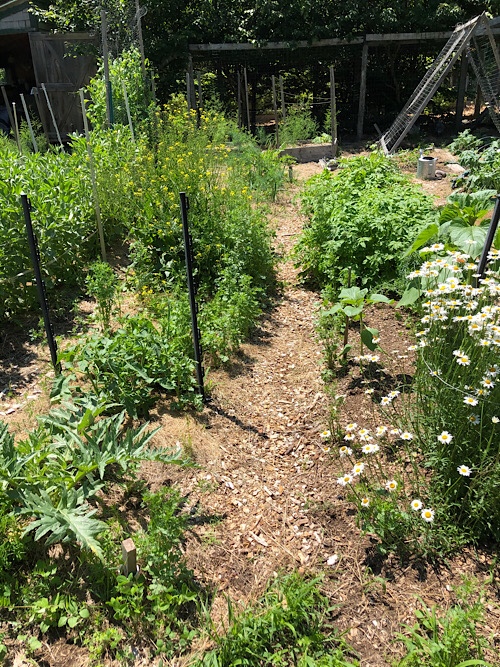
The artichokes are getting aphids as usual, but also showing their first little fruits. I’m not sure what to expect from the cutting celery, but we’ll watch it. The leaves taste great. I’ve harvested two big bunches of cilantro for pesto. The volunteer fingerlings have taken over the second row, outgrowing all the greens I planted there. I don’t know how to prevent the garden from getting taken over by potatoes. I’ve plucked a few potato beetles off these and found some eggs under the leaves. But not enough to call an infestation.
All the other plants in these rows are struggling a bit – finally got some good growth on the carrots. The beets were eaten by a rabbit and seem to be struggling back from that. I planted more carrot, beet, and leek seeds elsewhere. The Turkish Rocket has been very enjoyable for the early yellow flowers, but now that it’s dying back I may cut it.
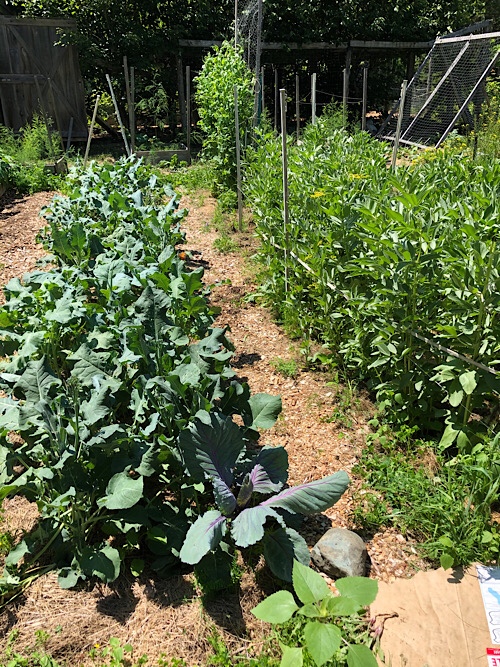
We’ve eaten garden broccoli and garden peas a few times. It is fun to snack on them. The favas continue their march toward maturity. I will save the parsnip seed this year before it gets destroyed by insects.
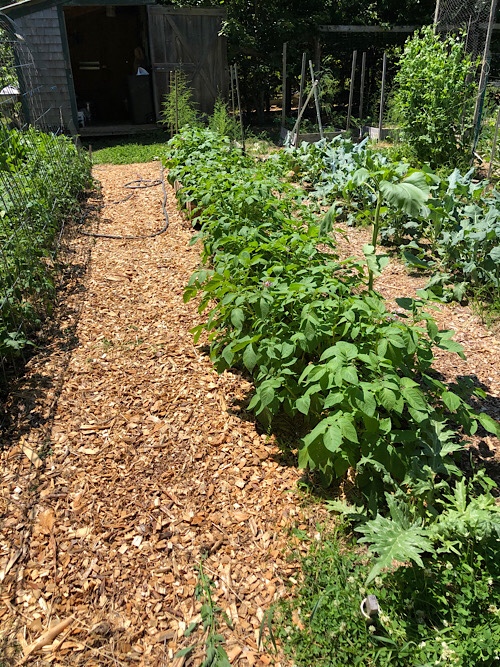
A truly breathtaking row of potatoes. These are the later varieties from my selection. At the top of the row, there is a wooden frame to allow for more hilling. They could be hilled again and again.

The potato flowers are really beautiful. These Adirondack Red flowers are particularly spectacular with the bright orange centers.

Shifting to the other side of the garden to get a better perspective on the tomato trellis. The center of this row is filled with volunteer potatoes. I almost pulled them out, but I didn’t have the heart. Sam is busy trellising and pruning the tomato plants on either side. I weeded the horseradish patch – another thing I can’t eradicate apparently. The flower row is taking a rest right now, very little blooming. But we have a huge number of volunteer sunflowers in the garden. And a spreading amount of the pink poppies. The garlic is doing well, as usual, and sending up scapes. We are eating them.
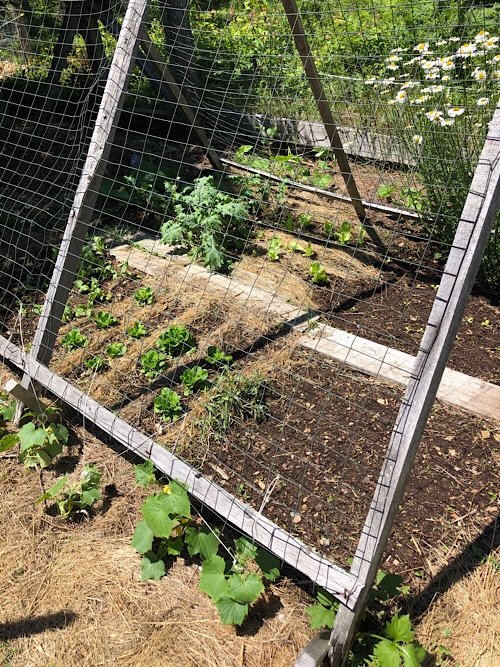
I put more work into this small area of the garden than any other. It is not really paying off – yet. I’ve had to reseed several times and the weeds are relentless and I have to water daily to try to get germination. But the cukes have recovered from their yellow-leaf transplant shock and are starting to bloom and climb. There are a few tiny cukes forming. The Green Salanova lettuces are looking better after being attacked by a rabbit (porcupine?) visitor who outmaneuvered the fence somehow. There are a few green beans growing along the other side.
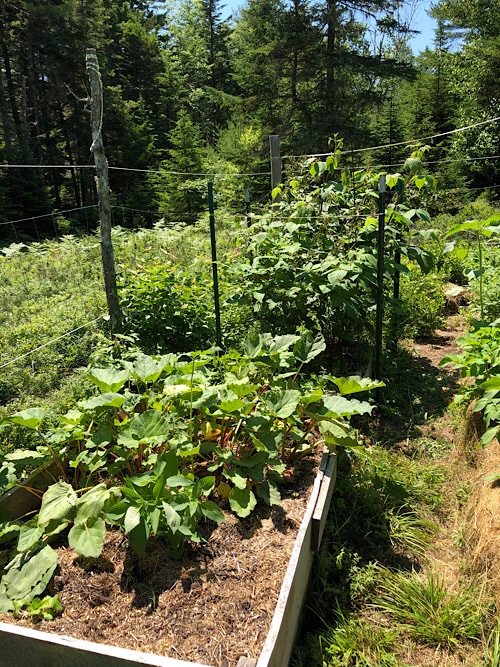
Moving around to the Fruit Yard. The rhubarb patch is struggling in a way – the stalks are mostly thin. I’ve harvested twice, once for rhubarb-ginger syrup and once for compote. So delicious. But I may leave the rest of it. The blackberries have a tremendous amount of green fruit on them. Sam put up more stakes and a string to hold them up. I didn’t seem any fruits on the gooseberry recently, maybe the birds ate them.
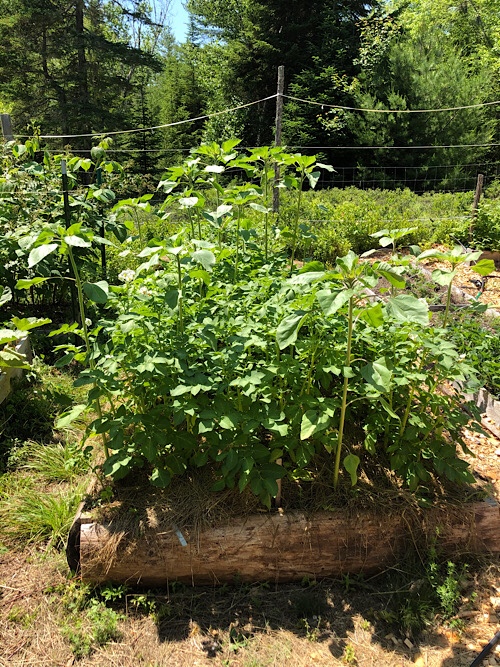
Another spectacular bed of potatoes. And sunflowers. No beetles to be found. We’ve tentatively hunted for new potatoes in the soil, but didn’t find any. Too early.
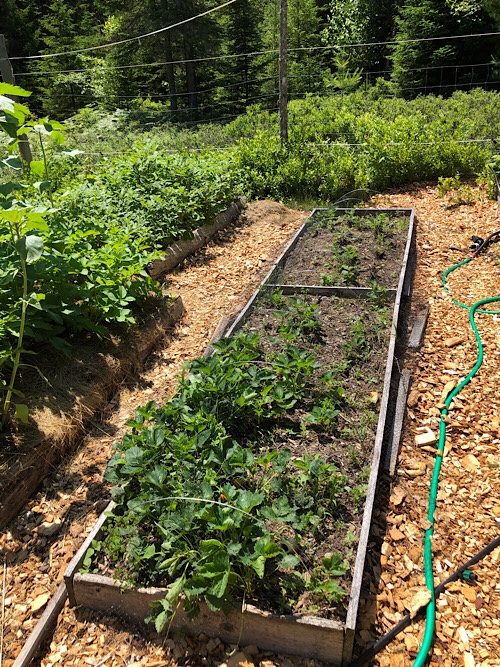
The neglected strawberry bed is looking better. There are a few berries, but I wouldn’t say it’s successfully recovered. A spectacular bed of fingerlings with dusky purple-green foliage in the back.
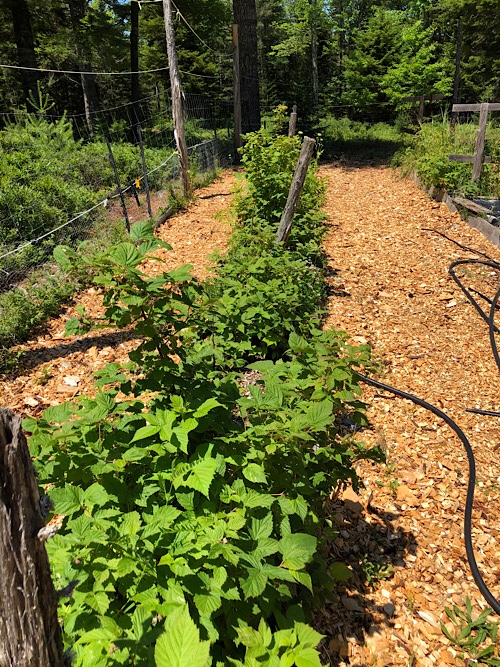
We’ll get some raspberries this year. I really want a gigantic quantity of raspberries and we’re not there yet. But progress. Sam has applied the soaker hose to these, which should help.
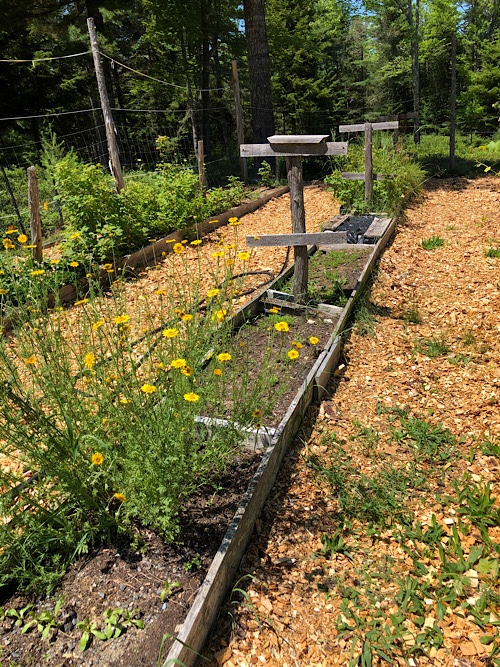
I love the dye garden even though it is very sparse right now. I’m weeding it regularly. We’ll see how it looks in another month.
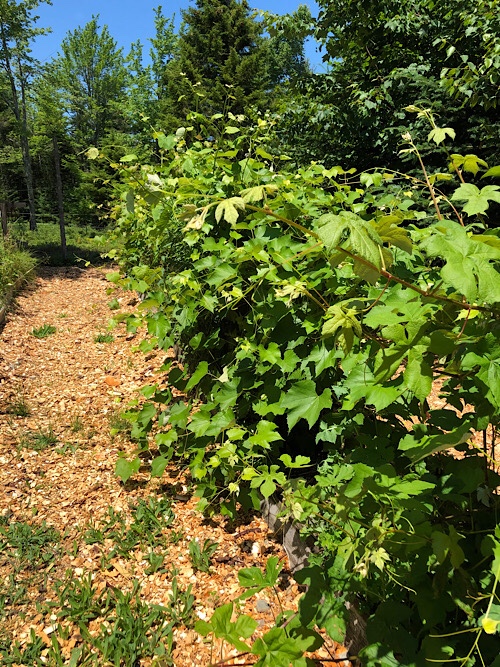
The grapes are so nice, but we don’t use them well. Need to look for more recipes. They are so tart.
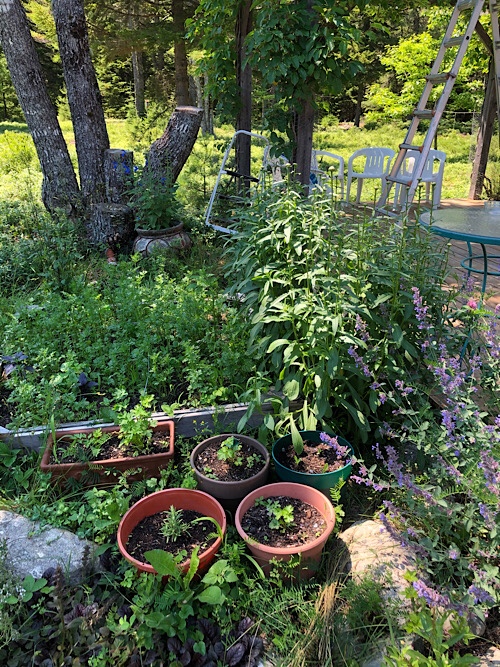
The front of the house is really beautiful in the shade. My container herbs , parsley and rosemary, are very pleasant to watch as they grow slowly in their protected spaces. The sandbox has a lot of self-seeded cilantro. It’s fun to go out and get some as a garnish.
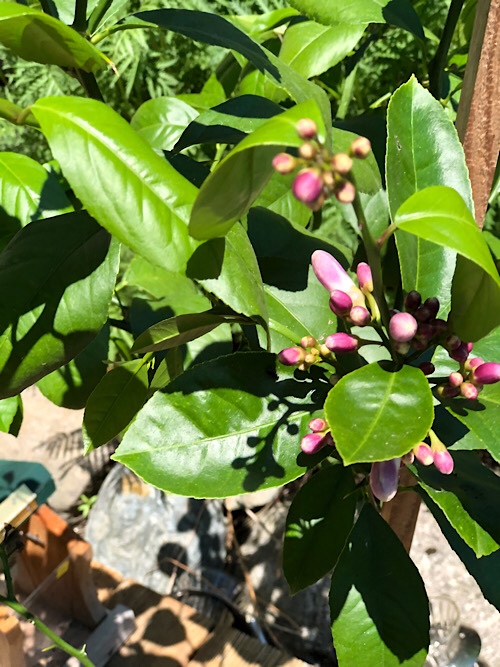
And last but not least, our second potted Meyer Lemon tree is blooming! The first one they sent at Christmas time predictably died of cold suffered in transit. We haven’t dared to repot this one yet, although we’ve been researching the preferred soil mixture. Maybe not until fall?